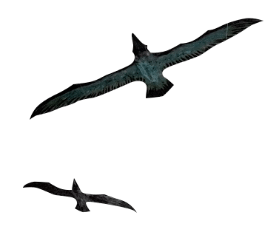
One day in December of 2014, I was feeling particularly low-energy. It was winter in Tromsø, Norway - located over 200 miles north of the Arctic Circle - and the middle of the Polar Night. During Tromsø’s Polar Night, the sun doesn’t rise for two months; the sky brightens for a few hours each day as the sun creeps below the horizon, but most of the day simply looks like night...

On this December day, I hadn’t seen the sun in weeks. It was almost Christmas, so the University of Tromsø - where I was conducting psychology research on mental wellbeing and winter - was closed for the holidays, which meant my schedule was even less structured than usual. I was having trouble waking up in the morning, sleeping until the afternoon, feeling tired all day. In between sleeps, I was spending lots of the day watching TV. Needless to say, I wasn’t feeling like my best self.
On this particular day, I knew I had to try and overcome my lethargy: I could feel the darkness dragging me down. So I bundled up, layering woolen leggings and undershirts, sweatpants and a sweatshirt under my winter coat, shoved my thickly-socked feet into my snow boots, donned a hat and scarf and mittens, and went out for a walk. It was well below freezing, and the sky was already darkening for the day in the early afternoon. I wasn’t sure it would feel nice to be outside, but I was sure I needed to move my body and get some fresh air, at least for a little bit.
Strolling around the small neighborhood on Kvaløya (“whale island”), the large island to Tromsø’s west, I soon found my spirits lifting. The crisp, Arctic air beat back some of my unshakeable fatigue. The light - which had looked so dark and foreboding from indoors - was actually soft and peaceful; it was “blue time,” the part of the day when the sky is no longer light but the darkness hasn’t fully settled, and the world looks impossibly blue-tinted. I admired fir trees strung with Christmas lights, felt the warmth emanating from softly-lit homes, noticed tiny ice crystals on bare branches. In the distance, I could hear the gleeful screams of kids sledding.
I couldn’t have been outside for more than half an hour. Yet my brief foray outdoors helped chase away some of my winter blues, reminding me of the season’s beauty, the benefits of breathing winter air, and how good it feels to walk a bit after sitting and lying for much of the day. I returned home energized and refreshed, and the rest of my day indoors was better for having gone outside.
Norwegians have a guiding principle that motivates them to spend time outdoors year-round, in all weather: friluftsliv. Coined by the Norwegian playwright Henrik Ibsen in 1859 (although part of life in Norway long before that), friluftstliv, directly translated, means “open air life.” But beyond the literal translation, friluftsliv may best be understood as referring to finding freedom in an open-air life. In pursuing an “open air life,” people in Norway are pursuing the freedom that comes from outdoor life. Friluftstliv is about communing with nature and with yourself and unburdening oneself from the demands of modern living. It’s about being in the present moment, with an emphasis on disconnecting from technology and the day-to-day in order to connect with something older, wilder, and larger. It’s about feeling the expansiveness of self and possibility that comes with the comfort we can find in nature.
In Norway, friluftsliv isn’t just given lip service. It’s a cultural identity (some argue the Norwegian cultural identity) - a shared value that influences daily life in profound ways. Children are introduced to nature, taught to navigate independently outdoors, and encouraged to practice friluftsliv starting at a young age; exposure to friluftstliv is nearly as common as math or English lessons in schools throughout Norway. Helping children and adolescents connect with nature is an important part of most physical education throughout Norway. Pioneered in Sweden, “forest preschools” - preschools that take place entirely or almost entirely outdoors - are growing in popularity worldwide, particularly as parents seek connection with nature, unstructured play, and independent learning as an antidote to modern ills like too much screen time, the rise of ADHD in children, and youth and adolescent distress and mental illness. In recent decades, friluftsliv has become a field of study in its own right, with over 20 Norwegian Universities specifically offering study programs or master's courses in it.
Getting outside can be particularly difficult in the winter, when long nights and cold, rainy days can make outdoor adventures seem unpleasant. Yet remaining indoors all winter long is a sure way to feel the season’s limitations: when we’re stuck inside, the weight of winter can drag us down. And the act of being outside - a bit of movement, fresh air, and connection with the natural world - are all natural anti-depressants, antidotes to winter blues. While Norwegians take friluftsliv quite seriously, experts who study and practice friluftsliv say that anyone, anywhere, can practice it: all it takes is the intention to be present outdoors, connecting with nature. Coffee on your front porch in the morning, walking your dog, taking a hike, or having a bonfire can all be forms of friluftsliv. This winter, try living “an open air life,” by making frilufstliv part of your routine: whether that means skiing or hiking outdoors or simply finding small moments throughout the day to step outside, feel the air, hear the rain, and take deep breaths. And if it seems too cold, dark, or wet to get outside, another Nordic saying might help: “There’s no such thing as bad weather, only bad clothing.”

